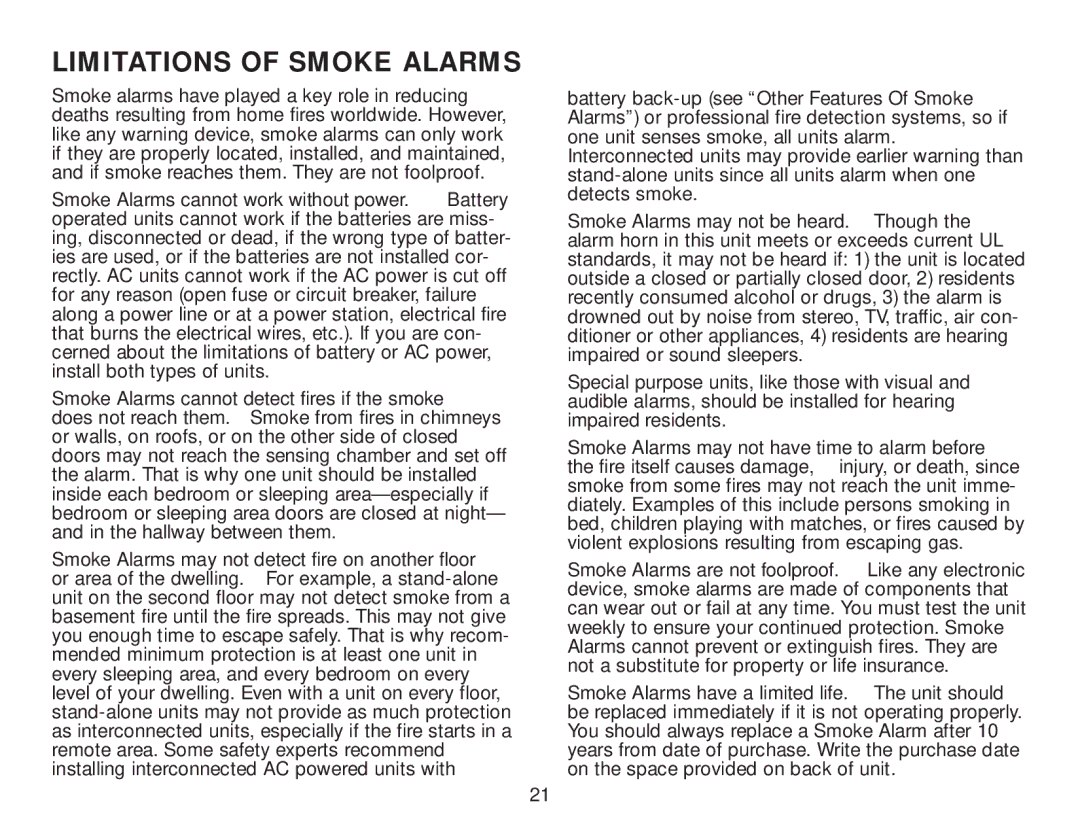4120 AC, 4120SB specifications
The BRK Electronics 4120SB and 4120AC are advanced smoke alarms designed to enhance safety in residential and commercial settings. These alarm models integrate innovative technologies and features that provide reliable performance and peace of mind to users.The 4120SB model is a battery-operated smoke alarm, making it ideal for applications where hardwired alarms may not be feasible. Utilizing a photoelectric sensor, it is designed to detect smoldering fires, which often produce dense smoke without high flames. This increases the likelihood of early detection, allowing occupants crucial time to evacuate safely. On the other hand, the 4120AC is a hardwired option that connects directly to the building’s electrical system, ensuring uninterrupted power supply while incorporating a battery backup. This guarantees continuous operation, even during power outages.
Both models are equipped with a loud 85-decibel alarm, ensuring that residents are alerted promptly in case of smoke detection. The devices also feature a test/silence button, allowing users to easily test the functionality of the alarm or silence it in the event of a false alarm caused by cooking fumes.
Safety is further enhanced by the incorporation of a Tamper-resistant feature that prevents unauthorized removal of the alarm from its mounted location. The alarm also includes a LED indicator that provides a visual cue of the unit’s operational status. When the unit is powered on and functioning correctly, the green LED will blink periodically. In contrast, a continuous red LED indicates an active alarm condition.
Both the 4120SB and 4120AC are designed for user-friendly installation. The units come with clear instructions and mounting hardware, allowing homeowners and professionals to easily install them in their desired locations. The compact design ensures that they can fit seamlessly into a variety of interiors.
Overall, the BRK Electronics 4120SB and 4120AC represent robust solutions for smoke detection. Their integration of advanced photoelectric technology, user-friendly features, and essential safety mechanisms make them essential components of any fire safety strategy, ensuring that homes and businesses are better protected against the threat of fire. Investing in these smoke alarms not only meets safety regulations but also fosters a proactive approach to fire safety that can save lives.
